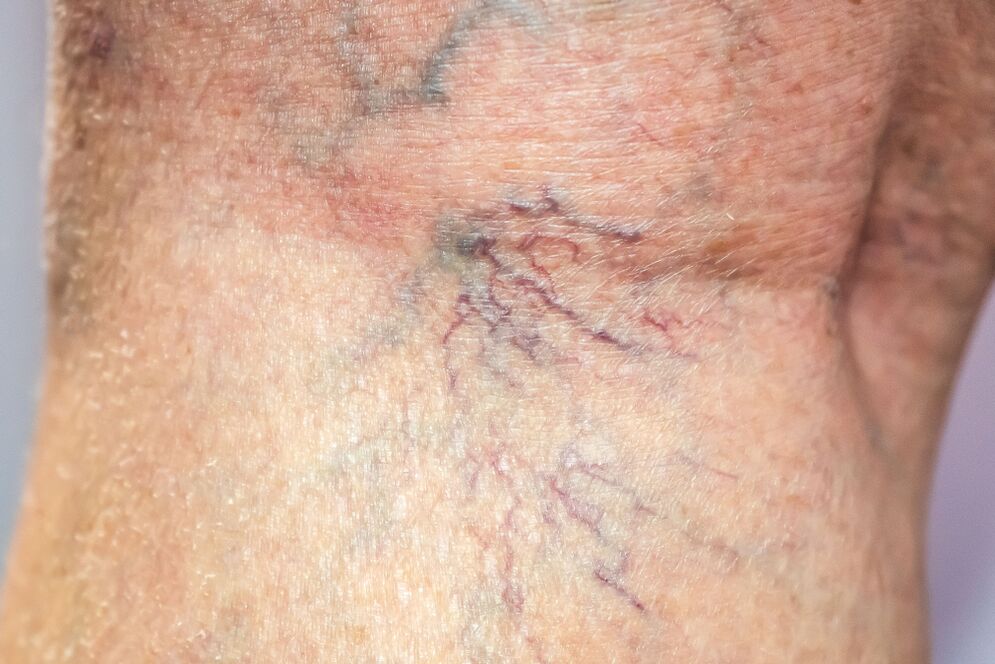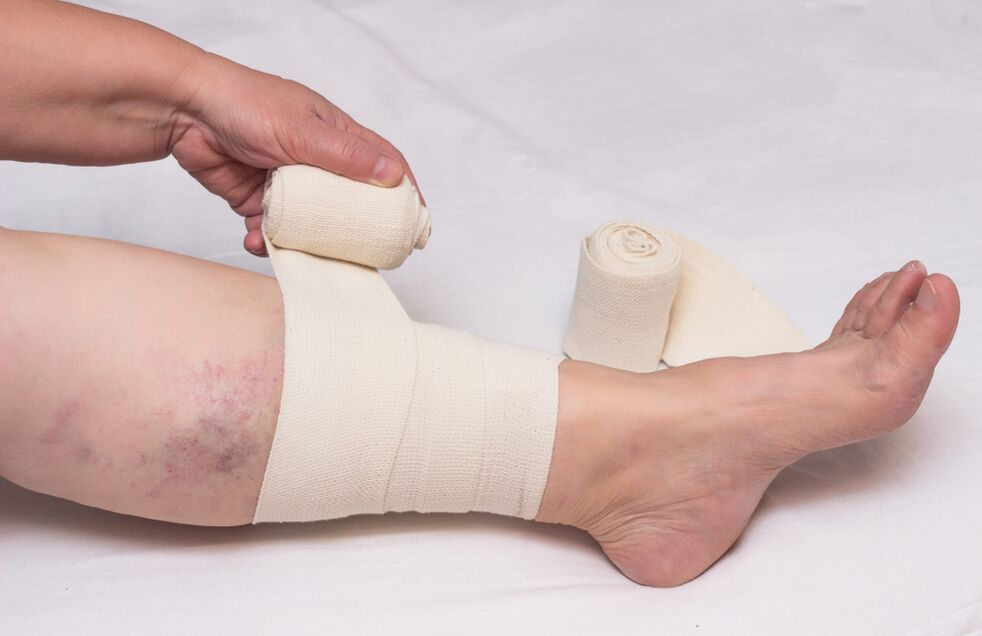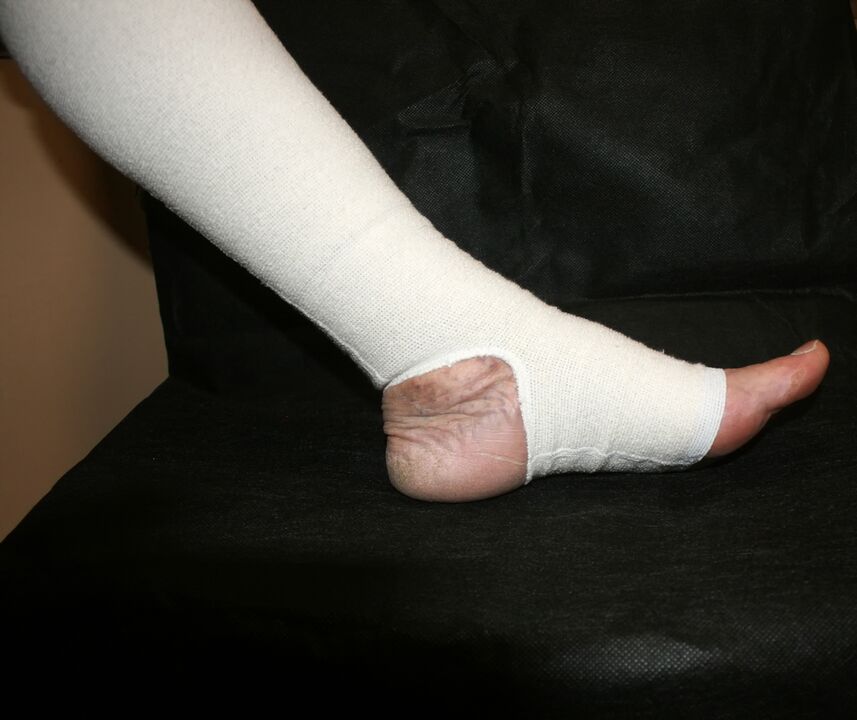The varicose veins of the lower limbs is a resistant and irreversible enlargement and extension of the veins, which occurs as a result of the gross changes in their walls, as well as the insufficiency of their apparatus of the valve due to a genetic defect.
The predisposition of women is explained by a cyclical increase in the extension of the walls of the veins with an increase in the concentration of the hormone progesterone.

Reasons
The main factors of varicose veins are the hereditary weakness of the vascular wall.
In addition, human lifestyle is of great importance in pathogenesis:
- long work, standing or sitting;
- lack of regular exercise;
- lifting weights;
- Taking estrogen -containing drugs.
The risk of varicose veins of the lower limbs increases with age.But more and more patients are younger than 30 years.
Manifestations of varicose veins
Most often, with varicose veins, patients are concerned about the feeling of heaviness, rupture, heat, itching of the skin, "anxiety" in the legs and pain, throbbing pain in the calf muscles.A characteristic characteristic of these signs is their appearance after prolonged standing.As a rule, the unpleasant sensations are completely passing or their intensity is significantly reduced when walking, lying down, after a night's rest or when using medical products for compression.
An important sign of the disease is the spasms in the calf muscles, usually occurring at night.
The subcutaneous veins expand in the form of convincing blue conglomerates along the lower part and the thigh.Unfortunately, there is an opinion that vascular stars are a manifestation of varicose veins.But it is worth noting that this is not an absolute sign of the disease and in many ways a purely cosmetic problem.Such signs can be on the skin with varicose veins, but in their bigger part they are also found in healthy people.
With the development of varicose veins, skin skin disorders of the lower leg develop.Initially, areas with excess color appear, slightly later subcutaneous tissue and skin are compacted, with the latter acquired a characteristic "lacquered" appearance.In the center of the painted skin area, in response to minimal injury, a small white area looks like a Starin drops.This is so -the adherent atrophy of the white skin, after which a trophic ulcer opens.
Skin skin disturbance is a sign of chronic venous deficiency, which also includes symmetrical swelling of the legs.

Diagnostics
Ultrasound scanning (color duplex scanning; Tripex Sconation) - "Gold Standard" in the diagnosis of varicose veins of the lower limbs.The ultrasound specialist should necessarily examine the vessels of the legs on both sides.It evaluates their diameter, foldability, blood flow characteristics and the value of reflux (reverse blood flow).The evaluation of the operation of the VA valves is performed not only in the patient's position while he is lying, but also standing.
Treatment of varicose veins of the lower limbs
The same symptoms can be signs of various diseases and the disease may not occur according to the textbook.Do not try to treat yourself - consult your doctor.
Modern treatment of varicose veins includes surgery, sclerotherapy, compression treatment and use of various medicines.
Work
Surgical treatment is the only method for reliable quality of life, reducing the risks of complications and the likelihood of recurrence of the disease.It consists in the removal of varicose veins.There are 2 types of interventions:
- Thermal prison - a method of minimally invasive (without shortening) using a laser or radio frequency sensor;
- Traditional surgery involves the cutting of varicose veins.Currently, the technique of such interventions is sufficiently crafted and allows you to get a good functional and cosmetic result.
Separately, he considers sclerotherapy as a method of surgical treatment.It successfully complements, and in some cases (the initial stages of varicose veins) replaces the operation.The procedure is the introduction of a special medicine in a varicose vein, which sticks it inside.
Compression treatment of varicose veins
Elastic bandages: pluses and disadvantages of
Compression therapy is a mandatory component of any method of treating varicose veins and the most effective method of prevention.
For compression treatment, elastic bandages are most commonly used, which, depending on the degree of stretching, are divided into 3 classes:
- short (overlap of a dressing not more than 70 % of the original size);
- medium (range of increase in the original length by stretching in the range of 70-140 %);
- Long (140 % and higher) expandability.
The classes are mandatory for the packaging of the dressing and they are the necessary characteristic for the right choice of the product.
It is advisable to use long -expanding bandages in the closest postoperative period to stop the blood and reliable fixation of the dressing.To ensure the optimal regimen of therapeutic compression, short and medium expansion dressings are most appropriate.
When using elastic bandages, the following rules must be followed:
- The dressing is applied to pre -trigger the foot "on yourself" to prevent the formation of creases in the ankle area, which can damage the skin when moving;
- The bandage always starts from the joints of the toes of the foot and captures the heel;
- The dressing pressure should be smoothly weakened from the ankle to the thigh;
- The dressing roller is scattered while in the immediate vicinity of the skin;
- Modeling the cylindrical profile of the limb is achieved by placing foam or latex pads.
Most patients with varicose veins should use an elastic bandage throughout the day, applying it in the morning before getting out of bed and shooting at night before the night break.Multi-layer compression dressings, not removed for a long time, can be used to treat trophic ulcers, while directly with the affected area of the skin of the lower legs is associated with dressings impregnated with medicines (zinc-vovattine and other dressings).
Despite its high efficiency, treatment with elastic bandages has obvious disadvantages - causing physical and aesthetic discomforts, in addition it is very difficult to fight older people, observing all rules.

Knitwear
The special compression knitting is gaining popularity.It is represented by socks to the lower, middle and upper thighs, as well as by tights (including special tights for pregnant women) of four classes for compression.
A similar knitwear is made of cotton, natural rubber - elastane and synthetic rubber.Natural fibers are optimal for sensitive and affected (varicose eczema, dermatitis, trophic disorders) of the skin.As for synthetic fibers, their advantages are a small diameter and a variety of colors that allow medical knitwear with high aesthetic properties.
Drug therapy of varicose veins
The main goals of drug therapy are to eliminate the subjective symptoms of venous insufficiency, as well as the prevention and reduction of the severity of side effects after surgical interventions.
One of the most commonly prescribed drugs is medicines with active substance diosmin.Usually, a week after its onset, a positive dynamics appear: night spasms, pain, passing weight, decrease in swelling.It is believed that the minimum duration of the course should be at least 2 months.In severe forms of varicose veins, taking the drug may last up to six months or more.

Ointments and gels
The simplicity of use and relative cheap ointments and gels make them very popular with patients and doctors.The serious disadvantage of uncontrolled use of local drugs is a high incidence of skin complications in the form of peeling, dermatitis and eczema caused by increasing sensitivity with prolonged use of the same medicine.
Therefore, it is not recommended to use local medicines (ointments, gels, cream) as a prophylaxis and in the absence of symptoms of chronic vein disease.
Heparin -based products are some of the popular medicines.It is used 3-4 times a day.At the beginning of use, a slight skin irritation and peeling phenomenon is possible in the areas of use of the drug.
Additional therapy
In the Russian Federation, physiotherapy methods of treatment are widespread.To fight similar symptoms of varicose veins of the lower limbs such as pain and cramps in the calf muscles, you can use the method of electrical muscle stimulation.Other methods of physiotherapy have no evidence of the effectiveness of the treatment of this disease.
Prevent varicose veins
The rational organization of labor and vacation is required for all patients in varicose veins.This category of patients is not recommended for work associated with a long stay in the position of an upright or sitting position, weight lifting and the effects of high fever.During work and at home, they need a periodic vacation with 15-20 degrees, raised at an angle of 15-20 degrees (during sleep it is recommended to raise the foot end of the bed above the level of the heart), rational nutrition, except for the consumption of spicy and salty foods, and alcohol.Terose weight should be strictly controlled as obesity leads to the progression of the disease.
In conditions of elastic compression, mobile sports (skiing, cycling) are allowed, but the optimal conditions for venous outflow and training for the muscles of the lower limbs are provided by swimming.
